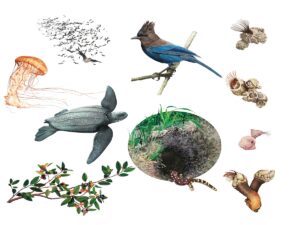With the rainy season upon us, California tiger salamanders will soon emerge from the depths of squirrel and gopher burrows in grasslands and oak savannas to breed in freshwater ponds. The reclusive amphibians will travel over a mile in search of vernal pools, where rainwater fills depressions in impervious clay soils. But 95 percent of this habitat type has vanished due to agriculture and urban development, says Kassie Siegel, staff attorney for the Center for Biological Diversity. And salamander populations have dropped off as a result.
In July, after a 14-year battle by scientists and conservation groups, the California tiger salamanders from the Central Coast to the eastern Sierra foothills finally received protected status as a threatened species under the federal Endangered Species Act. “The Central Valley listing was a huge victory — and we are breathing a big sigh of relief,” says Siegel. In August, the U.S. Fish and Wildlife Service (FWS) proposed 382,666 acres of “critical habitat” for the salamander in 20 counties in central California, including Alameda, Contra Costa, Solano, and Santa Clara Counties. This means that the FWS must review project proposals for federal lands, as well as projects on private lands that require a federal permit or federal funds, for possible impacts on salamander habitat. Under the critical habitat designation, other private landowners in the area do not need to consult with FWS, but they cannot kill or harm a threatened species, unless specifically exempted.
While salamander proponents are celebrating the central California listing, they have criticized the concurrent “downlisting” of the species from endangered to threatened in Sonoma County, where its remaining range covers just 24 square miles. According to Siegel, the Sonoma population, which received an emergency listing as “endangered” in 2002, is genetically distinct from the other populations in California. The center will be going back to court to challenge the downgrade. Through October 12, FWS is accepting comments on the proposed critical habitat for central California. E-mail: fw1Central_cts_pch@fws.gov. Call FWS at (916) 414-6600 for more information.




